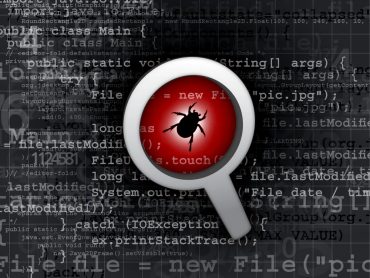
With 90% of the world’s data created in the last two years, the cloud risks becoming a dumping ground. Here is how AI and ML can help clean it up.
Businesses and prosumers create colossal amounts of data every single day. According to a study by Domo, 2.5 quintillion bytes of data are generated daily, with no signs of slowing down. Many users have begun to rely on cloud solutions for their file storage and/or data backup, but the cloud isn’t perfect.
Cloud technology has had a relatively short life in the world of business. In fact, 90 percent of the data in the world was generated within the last two years. As a result, users have dumped massive amounts of data into cloud applications without proper organization or strategy.
See also: Nutanix report sees enterprise cloud winning the cloud war
The flood of files transferred into the Cloud daily makes it nearly impossible to manage manually, but with Artificial Intelligence (AI) and Machine Learning (ML), the Cloud is elevated. Cloud users are able to gather, analyze, organize and protect their data better than ever. Take a look at these applications that combine AI and ML with cloud computing.
Digital Asset Management
Many cloud applications have weak search capabilities. Human error and the sheer amount of searchable data result in misplaced files across multiple cloud platforms. It’s easy to forget a filename, or where a file is stored, and PDF documents don’t always show up in a keyword search if there is no keyword in the filename.
AI is now smart enough to know more information about your files than you do.
Machine learning algorithms from Google and IBM can inspect images to determine key attributes, including image location and context. For example, you may have pictures of your golfing trip to Florida, but you didn’t take the time to name or manually tag them. AI scans and pulls up all images that include similar characteristics such as golf courses, clubs, golf balls, golf carts, etc. It then can then tag those images with all of the relevant words and the location where the picture was taken for easy searching.
This technology also applies to PDF documents, allowing users to find specific words in documents that otherwise wouldn’t be detected or indexed in a regular search engine. For example, OCR allows a scanned receipt from Mountain View Golf Course to be included in a search for the word “golf,” as that word shows up in the PDF document.
These technologies can also consolidate cloud account silos. Cloud Assurance services now aggregate from multiple cloud storage accounts, such as Google Drive, Box, Dropbox, Adobe Creative Cloud, OneDrive and others, into one safe place.
Virtual Assistants
Virtual assistants (VAs) created by Amazon, Google and Apple have become daily use devices in consumers’ lives. Thanks to cloud computing and advances in machine learning, these companies are developing AI systems which can learn new words and even how to carry on a conversation.
The data stored in the cloud, coupled with AI, makes it possible for VAs to respond to inquiries and learn new things. As AI learns, it can bring that knowledge and data back to the Cloud, improving AIs that follow.
Functions like speech-to-text, text-to-speech, and speech recognition are boosting workplace productivity and workflow by automating tasks like dictating emails, transcribing meeting notes, giving the VA tasks and commands, and analyzing company sentiment to detect overall morale in an enterprise through speech analytics.
Reality-as-a-Service
AI is nothing without big data, and technology like drones and location content providers capture a lot of data, frequently. “Aerial imagery as a service” delivers high-resolution, 2D and 3D aerial imagery to the Cloud, enabling easy access to an entire world of aerial captures from any device. This is called Reality-as-a-Service (RaaS).
Combining machine learning with RaaS allows automatic detection of stationary features on the ground without human intervention, such as skylights from solar panels, pools from ponds and other ground features like potholes or road imperfections. Other systems can analyze the height, width and surface area of buildings.
RaaS applications are unlimited. Some of the industries on the forefront of potential applications are autonomous driving, smart cities, retail and commercial development, mapping, architecture, design, construction, insurance, solar and engineering industries, among others.
Cloud-based security for applications
IBM Corporation recently launched IBM Security Connect, allowing vendors and developers to apply cloud technology, machine learning, and AI to cybersecurity to increase a product’s effectiveness. The platform uses predictive analytics to detect suspicious activity and notify cybersecurity staff who troubleshoot and handle security breaches regularly.
According to the company, it is “the first security cloud platform built on open technologies, with AI at its core, to analyze federated security data across previously unconnected tools and environments.”
Cloud capabilities, AI and ML will each advance with the maturation of the others, guaranteeing permeation in both our professional and personal lives.





























